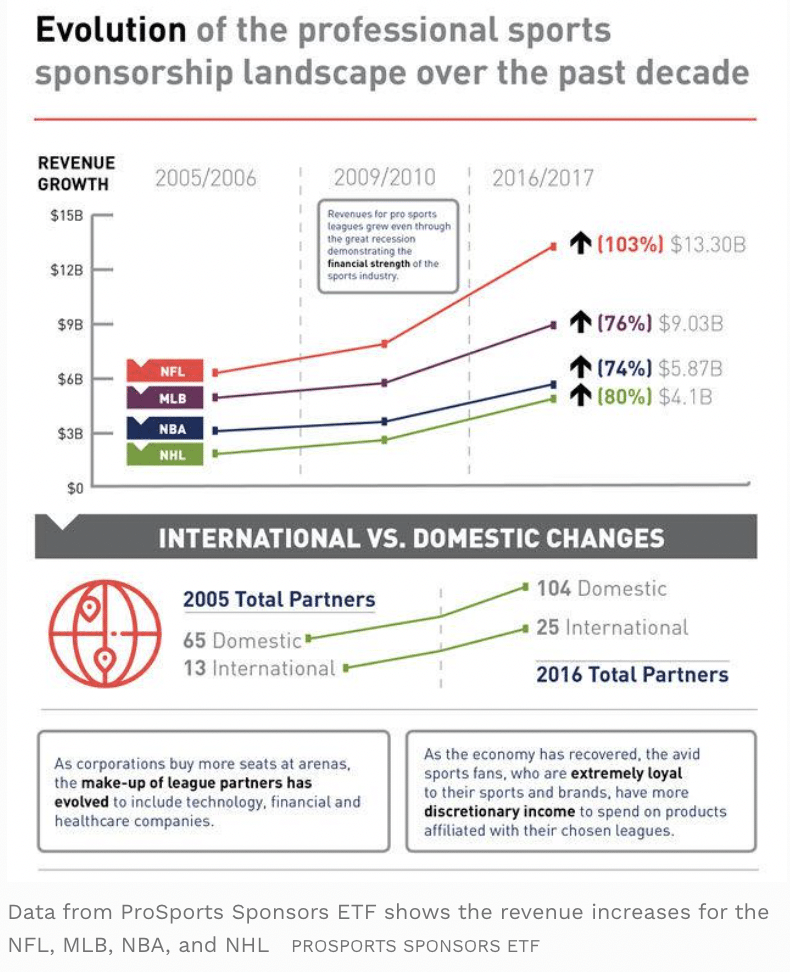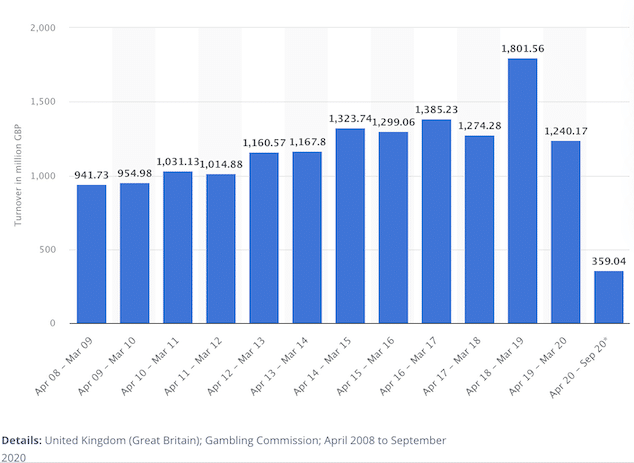
How Sports became big business across the world as sponsors & viewer participation piled on the last decades leading into an explosion in player salaries & cost of commercials.
The salaries of elite athletes is a hot topic of debate these days, with most top level sports stars earning millions of dollars a year. It seems that every year now we are hearing of ‘record breaking’ contracts being signed for gargantuan amounts of money, but there was a time where these athletes were paid very little or even nothing at all.
It wasn’t always this way…
In 1970, the players association agreed to a $9000 minimum salary for NFL players which, whilst still a breakthrough, was a measly amount. In fact, many players took second jobs in sales or at steel mills to make ends meet and pro-football was not big business.
These minimum salaries slowly crept up throughout the 70s, helped by the competition of rival leagues. However, it wasn’t until the NFL strikes in 1982 and 1987 that we saw the explosion of salaries in the NFL. Players won the rights to get more team revenues as well as the ability to bargain collectively. That helped average salaries go from $198,000 in 1986 to almost $800,000 by the start of the 1993 season.
That is just one example of how pro athletes came into big money, but the story is very similar for many other sports. One of the biggest factors behind rising player salaries in sports is the ever-growing commercialization of the game(s). As well as a list of sponsors long enough to fill the dictionary, many of the biggest sporting events of the year now transcend sport itself.
Going back to the NFL, the Super Bowl is perhaps the greatest example of a sport, or at the very least a sporting event, becoming big business. In 1967, tickets to the first ever Super Bowl game were around $12, which is $87 when adjusted for inflation which is still extremely affordable by todays standards. The coverage of the game, which was split between NBC and CBS, had an average viewership of 24.5m and the sponsor-less half-time show was made up of a marching band, to men in jet packs and the release of 4000 pigeons.

Big business as usual
Fast forward to 2022 and football aside, the event is almost unrecognizable. The Super Bowl has become almost secondary to the entertainment. The halftime show is worth around $50m alone, having been sponsored by Pepsi since 2012 as part of a marketing deal valued at over $2bn. The lowest price of a ticket package to 2022’s game between the LA Rams and Cincinnati Bengals was an eye watering $3275 with resellers having single tickets up to as much as $10,000 on the day.
However, the most profitable aspect of Super Bowl Sunday is of course the commercials. With viewers peaking at over 100m per year in the US, there is no other time that brands will have more eyes on their products and services. This is why a 30 second commercial spot will set them back a whopping $6.5m. This is a true reflection of just how commercialized the event has become, especially seeing as many viewers will tune in for the commercials alone.
The NBA has also leaned heavily into commercialization, despite the early efforts of David Stern to steer away from it. Advertisements are plastered over every inch of the arena; the league secured an exclusive apparel deal with Nike in 2015 and the TV coverage will often give up time to plug their sponsors during the game. Most of all the ‘Big Four’ sports leagues in the US have become commercial commodities for a whole host of brands and sponsors, generating billions of dollars each year.
Over in the UK, the English Premier League is not quite as commercialized as sports leagues in the US. The biggest soccer league in the world, the Premier League has been built on tradition and there has been plenty of pushback from fans on what the perceive as the ‘Americanization’ of the sport, seen in the recent rejection of the “Super League”. However, it was always inevitable that they would see it creep into the game and in recent years American, Chinese, Arab, and other foreign investors have dumped billions of pounds into the Premier League.

Sports betting and football betting alone has become its own industry. The preliminary annual turnover of soccer betting in Great Britain was approximately 359 million British pounds, between April 2020 and September 2020.
The TV rights to the premier league however are certainly the most profitable commodity that the league has. The value of overseas deals has now overtaken income from domestic contracts with Sky Sports and BT Sport, and is expected to pass £10bn over the next three years.
It is through these kind of business deals however that teams are able to attract the best players in the world to their clubs. They have allowed for better training facilities and stadiums and all in all a better product on the field. But there are casualties to this business style. Working class people have been slowly priced out of the sport they built for years, and there are growing fears that this will soon be passed on down the footballing pyramid.
We are truly blessed to live in an age where we get to watch some of the greatest athletes to have ever lived play in their respective leagues. There is no denying that the money in sports nowadays has helped us get to this point, and rest assured there is even better to come.






